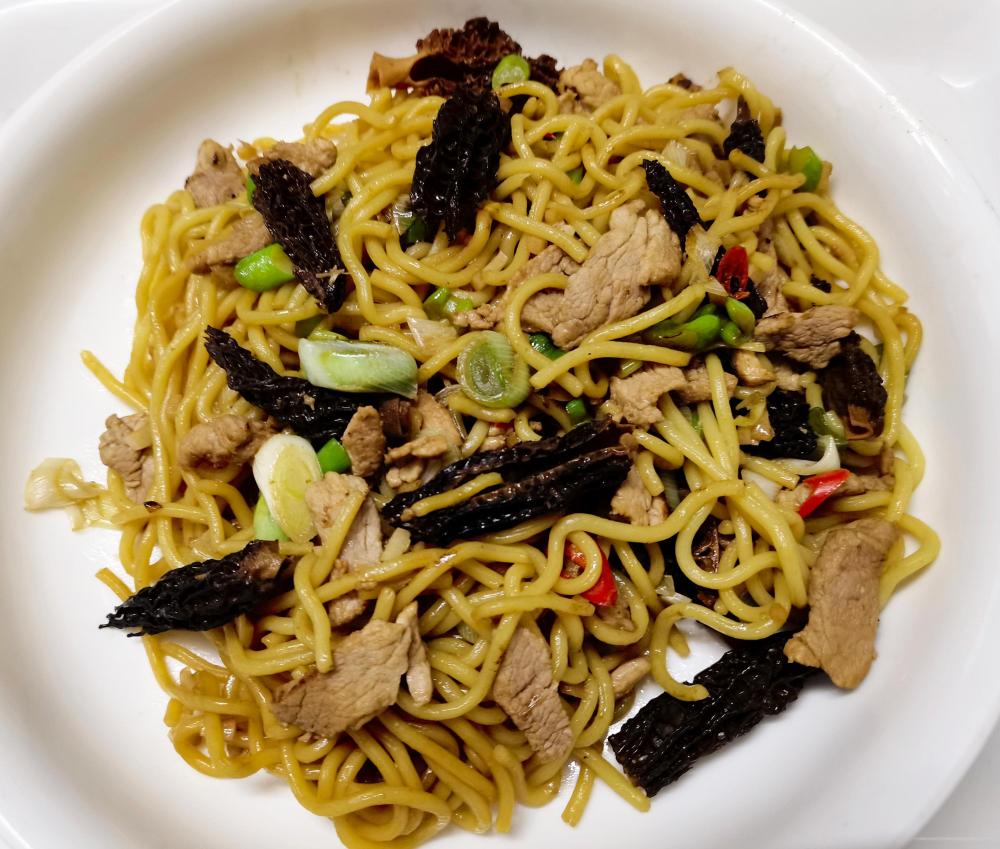Not so much a myth, although it encompasses myths; more a misconception perhaps.
Today, I stumbled across a bizarre discussion in some corner of Facebook, when some clot claimed that chow mein was 100% American and unknown in China. Not so. Well, not exactly.
The name ‘chow mein’ is virtually unknown. It is a corruption of 炒面 / 炒麵* which in Mandarin (known in China as 普通话 (pǔ tōng huà)), the official and dominant Chinese language is chǎo miàn when rendered in pinyin the officially recognised transliteration. This is pronounced something like chow myen**.
No doubt someone will point out that chow mein is both the Cantonese name and a Cantonese dish. Wrong on both counts. In Cantonese it is caau2 min6. Also wheat noodles, which are always used in chao mian are mostly associated with northern China, while the south favours rice noodles (炒粉 - chǎo fěn when fried). The Cantonese area is about as far south as you can go in China.
One thing for sure, if you visit China and hope to find your favourite style of chao mein, you’re possibly going to be disappointed. 炒面 / 炒麵 (chǎo miàn) simply means ‘fried (wheat) noodles’, so is a category of dish and not a menu item as such. I only recall seeing it once on a menu as a dish and that was in a college canteen where they only had one choice. Rather than simply listing chao mian, menus will almost always give a specific type of chao mian of which there are many. Seafood chao mian, beef chao mian, pork chao mian, chicken chao mian, sausage chao mian, ham chao mian, egg chao mian, duck chao mian, donkey chao mian and many, many more. I’ve even see Spam® chao mian! There are also regional types such as Shanghai chao mian. There is a good illustration of the variety on offer here. These are only really sold in canteens and fast food type places; or at home; not usually in more upmarket restaurants.
Also, chao mian in China uses soft noodles of any description. The crispy chow mein noodles (a tautology if there ever was one) are unknown here in mainland China. Also the type of chow mein that comes with the brown sauce is unknown here. The dish may include some soy sauce, but more as a seasoning than a sauce.
Quote“A great Chow Mein comes down to the sauce, made of soy sauce, oyster sauce, sesame oil, sugar and cornstarch for thickening. Slippery noodles slick with the savoury sauce is noodle heaven!”
This quote from one internet recipe describes something no one here would recognise.
I often cook chao mian and have posted many examples here but many people may not have considered them to be chow mein. I’m not saying there is anything wrong with whatever chow mein you get locally, just saying it is unlikely you’ll find it here.
* As ever, when I give two Chinese names, the first is in Simple Characters as used on the mainland and in Singapore, whereas the second is now only used in Hong Kong, Macau, Taiwan and among some of the Chinese diaspora.
** Chow rhyming with brow; myen Is pronounced like yen, but with an initial /m/ sound.



